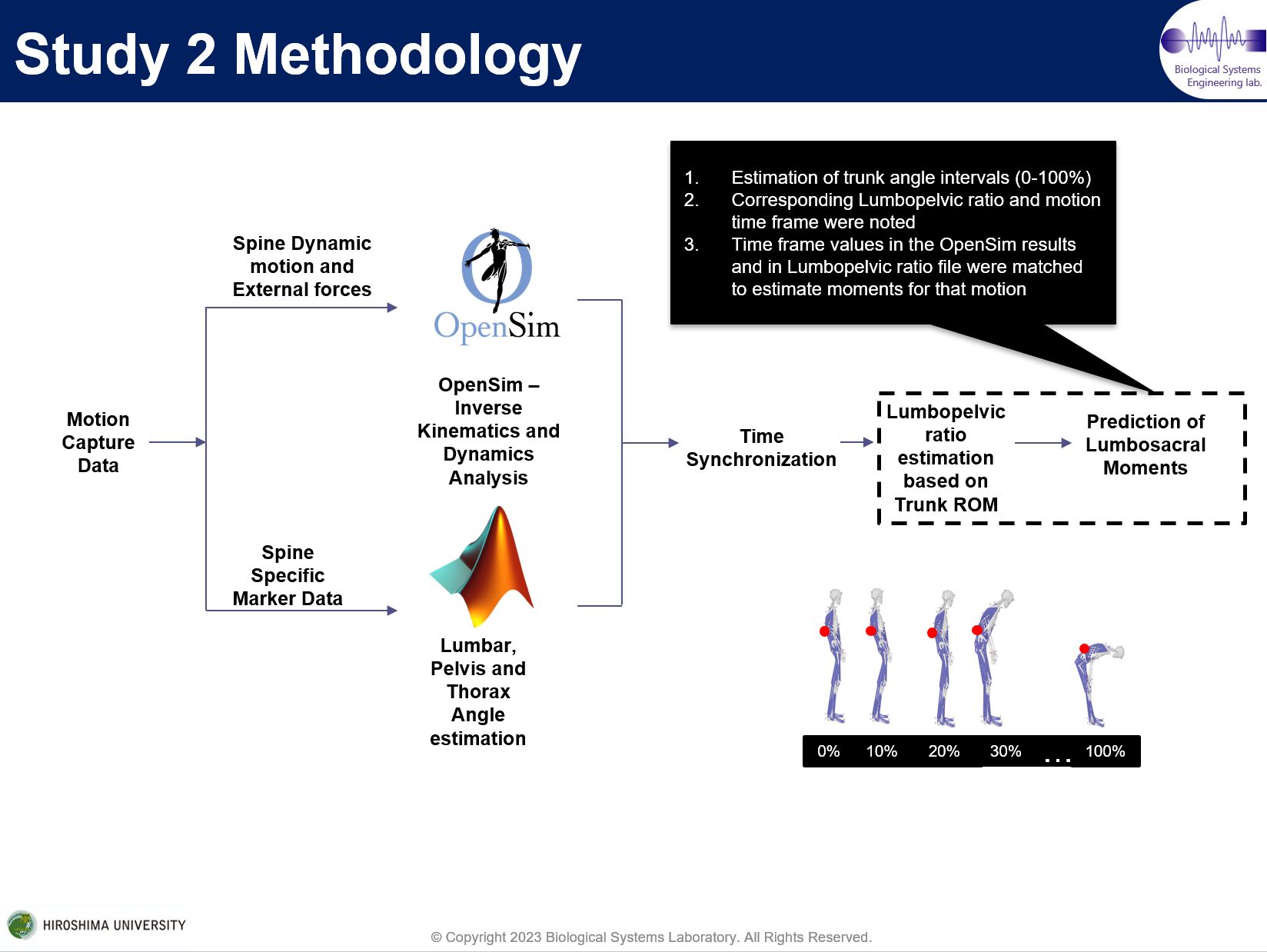Yuichi Kurita, Biological Systems Engineering Lab.
Analyzing the relationship between kinetic and lumbopelvic rhythm for dynamic range of motion using biomechanical modelling
Gunarajulu Renganatha (2023年9月博士前期課程修了)
Low back pain (LBP) is one of the most significant health issues prevalent in Japan. It also affects the socioeconomic status of the nation. Several studies have suggested that repeated trunk bending is one of the principal risk factors that contribute to the onset and progression of LBP. Repetitive exposures to shear forces on the intervertebral discs and ligaments of the lumbar spine constitute one of the highest risks of back in-jury for workers whose tasks require frequent bending. In the clinical evaluation of spinal movement and motor control coordination in individuals with musculoskeletal disorders, sagittal plane-oriented bending while standing is a frequently used technique. These assessment methods are error-prone and less accurate. Hence, to accurately measure the association of the lumbar and spine, lumbopelvic rhythm or hip-spine coordination is considered. The lumbopelvic ratio (L/P) is the essential input for developing biomechanical models to evaluate spinal loads and estimate the risk of injury. Although there are several studies that discriminate the L/P ratio between control and LBP groups, the movement functionality is not properly understood. The second major objective is to use computational models to predict kinetic features which are essential to developing work exosuit or developing methodologies to reduce low back pain. The major drawback of the Ghasemi et al. spinal load prediction study is that it utilizes the finite element model, and it doesn’t have motion-oriented information such as force plate and joint angle data. In this paper, we are examining the lumbar spine dynamic task with different speeds (Fast, Normal, and Slow). The main objective of this study is to establish the relationship lumbopelvic ratio and kinetic parameter (lumbosacral moments/torques) at each lumbar level. Also in our current study, the moments were estimated using a full-body musculoskeletal model by overcoming all the gaps stated in the previous research.



